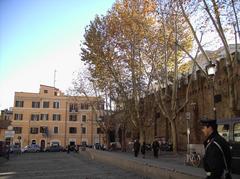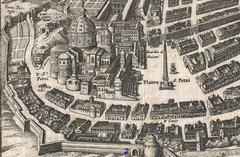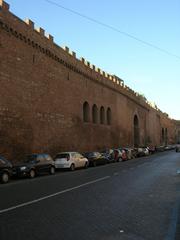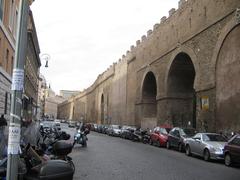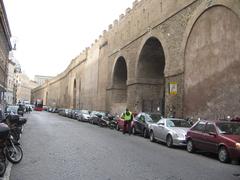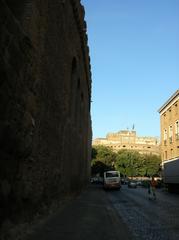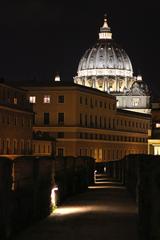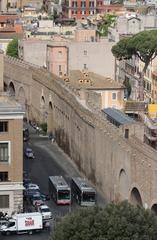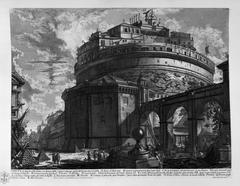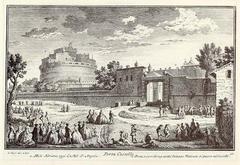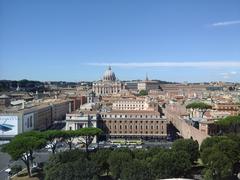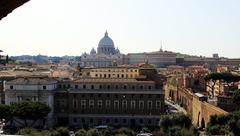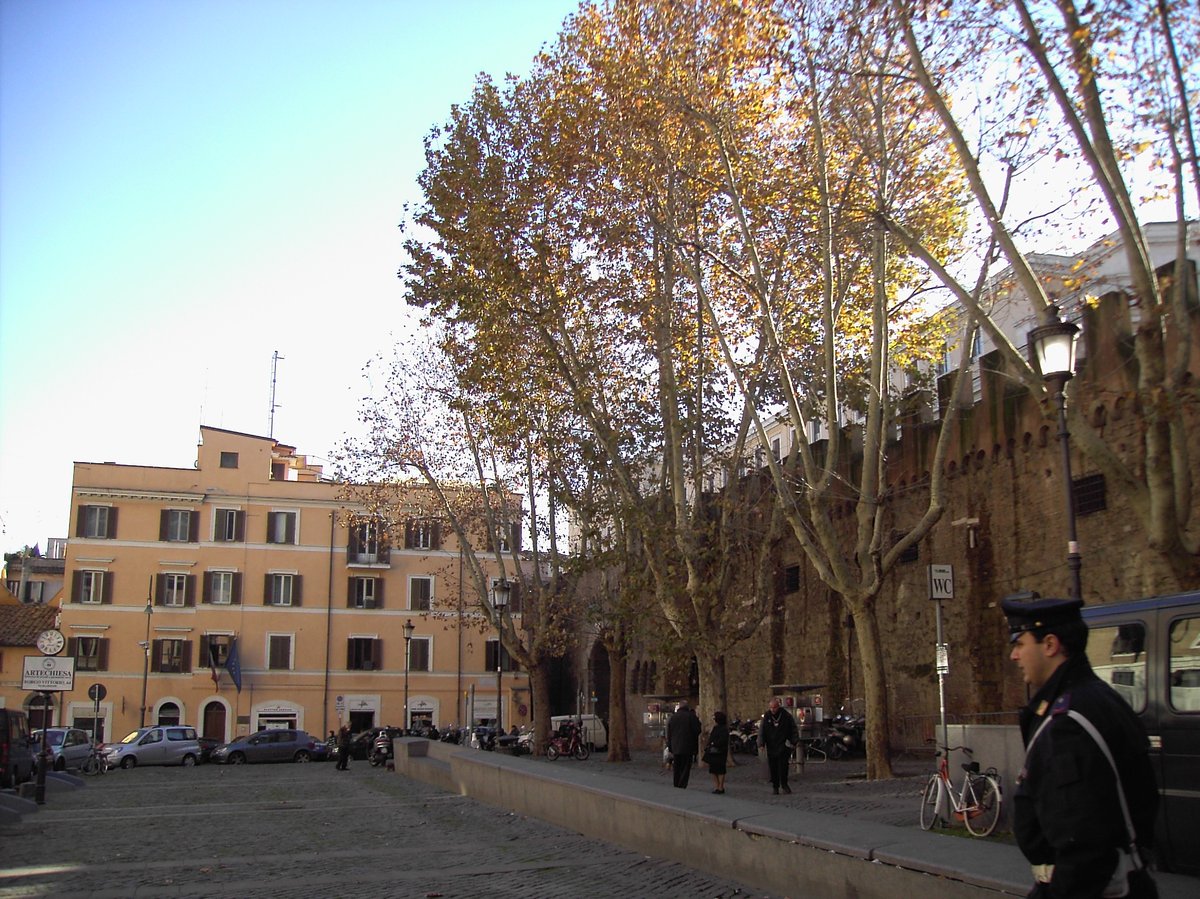
Passetto di Borgo: Visiting Hours, Tickets, and Historical Guide in Rome
Date: 14/06/2025
Introduction
The Passetto di Borgo, a fortified corridor stretching for approximately 800 meters, is one of Rome’s most enigmatic and historically rich landmarks. Connecting the Vatican City with Castel Sant’Angelo, this elevated passageway embodies centuries of papal intrigue, resilience, and architectural ingenuity. Originally commissioned by Pope Nicholas III in 1277, the Passetto was crafted as a secret escape route, enabling popes and their close advisors to flee the Vatican during moments of political turmoil or siege. Over its long history, the corridor has witnessed dramatic episodes, including the famous escapes of Pope Alexander VI in 1494 and Pope Clement VII during the Sack of Rome in 1527, underscoring its vital strategic and symbolic roles.
Recent comprehensive restorations, completed in December 2024, have transformed the Passetto from a shrouded relic into a captivating destination. Guided tours now offer visitors an immersive journey through this remarkable corridor, complete with multimedia installations and enhanced accessibility, making it a must-see for those eager to explore Rome’s hidden history.
This guide provides a detailed overview of the Passetto di Borgo’s origins, architectural features, cultural impact, visitor information, travel tips, and practical advice. Whether you are a history enthusiast or a curious traveler, discover how to experience this secret passageway and enrich your Roman adventure (Wikipedia: Passetto di Borgo; Romeing; Finestre sull’Arte).
Historical Development and Architectural Evolution
Origins and Construction
The Passetto di Borgo was commissioned in 1277 by Pope Nicholas III, coinciding with the transfer of the papal residence from the Lateran to the Vatican. Its core function was to ensure a secure and concealed route from the Apostolic Palace behind St. Peter’s Basilica to Castel Sant’Angelo on the Tiber River. While Nicholas III oversaw the main construction, the corridor is built upon earlier fortifications, some dating back to the 6th-century Gothic War, when the Ostrogothic king Totila and Pope Leo IV established defenses in the area (Wikipedia: Passetto di Borgo; througheternity.com).
Pope Alexander VI later reinforced the passage, doubling its structure and adding a covered section, thereby increasing its security and effectiveness as an escape route (romeing.it).
Architectural Features
The Passetto is a striking example of medieval military engineering. Built primarily from brick and tufa stone, it features both open-air and covered segments. The upper walkway provides sweeping views over Rome and was used for surveillance, while the lower, enclosed corridor served as the principal escape route for the papacy. The corridor varies in width from 1.2 to 3 meters and reaches up to 15 meters in height in some sections. Its construction atop the Vatican walls, punctuated by arches and small windows, ensures both defense and secrecy (castelsantangelorome.com; castelsantangelo-tickets.com).
Strategic and Cultural Significance
Role in Papal Security
The Passetto’s primary purpose was to guarantee the pope’s safety during times of crisis. Its effectiveness was proven during the Sack of Rome in 1527, when Pope Clement VII fled through the corridor to Castel Sant’Angelo while 147 Swiss Guards died defending the Vatican (romeing.it; througheternity.com). Other popes, including Alexander VI, also relied on the Passetto to evade invading forces or civil unrest.
Surveillance and the Borgo District
The elevated corridor provided papal guards with a vantage point over the bustling Borgo district, allowing early detection of threats and maintaining order in an area teeming with pilgrims, artisans, and merchants (througheternity.com).
Symbolism and Cultural Impact
Beyond its functional role, the Passetto symbolizes the enduring tension between spiritual authority and temporal power. Its secretive design and dramatic history have inspired countless works of art, literature, and film, including Dan Brown’s “Angels & Demons.” The corridor remains a powerful emblem of papal resilience and Rome’s layered history (Wanted in Rome).
Restoration and Modern Visitor Experience
Restoration Timeline and Project Scope
Between December 2018 and March 2024, the Passetto underwent a thorough restoration, culminating in its public reopening in December 2024 (Finestre sull’Arte; Romeing). Funded by the Regional Secretariat of Lazio, the project included:
- Structural consolidation and repair of both interior and exterior walls.
- Restoration of flooring and installation of modern lighting.
- Removal of architectural barriers, including two hidden elevators for accessibility.
- Installation of a fiber optic network to support multimedia guides and digital enhancements.
- Reinforcement near key access points such as Porta Angelica.
Accessibility and Enhanced Features
The restoration prioritized accessibility, adding elevators at the Torre del Mascherino and Bastione San Marco entrances. Paths were reconfigured for smoother passage, and lighting was upgraded to highlight architectural details and improve safety. These enhancements allow wheelchair users and visitors with mobility challenges to fully experience the corridor (Jerusalem Post).
Interpretive Installations
At Bastione San Marco, multimedia installations by Studio Azzurro immerse visitors in the corridor’s dramatic past. Exhibits include virtual tours, historical artifacts like a 16th-century cannonball, and a sculpted group depicting pivotal moments such as the meeting of Pope Eugene IV and Emperor Sigismund (Finestre sull’Arte; Wanted in Rome).
Visiting Hours, Tickets, and Tour Options
Passetto di Borgo Visiting Hours
- Standard guided tours: Daily, 9:00 AM – 6:00 PM
- Special evening tours: Begin at 7:30 PM, lasting approximately one hour
- Closed on major holidays; check official websites for seasonal updates
Ticket Information
- Passetto di Borgo only: €16 (standard), €28 (evening tour)
- Combined Passetto & Castel Sant’Angelo: €26
- Reduced and free tickets available for eligible visitors (EU citizens under 18, seniors, etc.)
- Tickets should be purchased in advance via Musei Italiani or CoopCulture. On-site tickets are limited.
Tour Experience
Guided tours provide access to both the open-air and covered segments of the corridor, enriched by historical storytelling and interactive exhibits. Tours are available in Italian and English; inquire about other languages when booking.
Travel Tips and Nearby Attractions
- Best Times to Visit: Early morning or evening for fewer crowds and atmospheric lighting.
- How to Get There: Metro Line A (Ottaviano-San Pietro), multiple bus lines, or a short walk from St. Peter’s Square.
- Duration: Tours last approximately one hour.
- Nearby Sites: Combine your visit with Castel Sant’Angelo, St. Peter’s Basilica, and the Vatican Museums.
- What to Bring: Comfortable shoes; large bags may be restricted.
Legends, Myths, and Historical Anecdotes
The Passetto is steeped in legend. Stories abound of ghostly apparitions, especially the spirits of Swiss Guards who fell during the 1527 Sack of Rome, and mysterious sounds echoing through the stone corridor at night. Myths persist about secret negotiations and the passage’s use for smuggling treasures and documents. While hard evidence is lacking, such tales add to the corridor’s intrigue (Romeing).
Preservation and Future-Proofing
Ongoing conservation efforts ensure the Passetto di Borgo remains a living monument. Modern engineering and digital technologies, including fiber optics and mechanized trapdoors, position the corridor for continued public engagement and educational innovation (Finestre sull’Arte).
Frequently Asked Questions (FAQ)
Q: What are the Passetto di Borgo’s opening hours?
A: Guided tours run daily from 9:00 AM to 6:00 PM, with special evening tours at 7:30 PM. Check official websites for updates.
Q: How much do tickets cost?
A: €16 for standard day tours, €28 for evening tours, and €26 for combined tickets with Castel Sant’Angelo. Reduced rates are available.
Q: Is the Passetto di Borgo accessible to wheelchair users?
A: Yes, recent renovations added elevators and barrier-free paths.
Q: Can I visit without a guide?
A: No, access is exclusively via guided tours to protect the corridor’s structure.
Q: Are tours available in English?
A: Yes, with options for other languages depending on availability.
Q: How do I get there?
A: The corridor is accessible from the Vatican area via metro, bus, or on foot.
Summary and Visitor Recommendations
The Passetto di Borgo offers a unique blend of history, legend, and architectural mastery. Its recent restoration not only preserves this vital link to Rome’s past but also enhances the visitor experience through accessibility and modern interpretive features. Combine your visit with nearby landmarks like Castel Sant’Angelo and St. Peter’s Basilica to deepen your understanding of Rome’s historical landscape. Early booking is recommended, especially during the Jubilee Year, and accessible tours ensure everyone can enjoy this evocative monument (Romeing; Finestre sull’Arte; Wikipedia: Passetto di Borgo).
